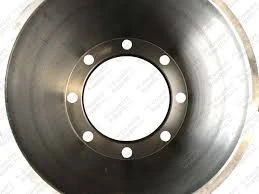
-
 Afrikaans
Afrikaans -
 Albanian
Albanian -
 Amharic
Amharic -
 Arabic
Arabic -
 Armenian
Armenian -
 Azerbaijani
Azerbaijani -
 Basque
Basque -
 Belarusian
Belarusian -
 Bengali
Bengali -
 Bosnian
Bosnian -
 Bulgarian
Bulgarian -
 Catalan
Catalan -
 Cebuano
Cebuano -
 Corsican
Corsican -
 Croatian
Croatian -
 Czech
Czech -
 Danish
Danish -
 Dutch
Dutch -
 ஆங்கிலம்
ஆங்கிலம் -
 Esperanto
Esperanto -
 Estonian
Estonian -
 Finnish
Finnish -
 French
French -
 Frisian
Frisian -
 Galician
Galician -
 Georgian
Georgian -
 German
German -
 Greek
Greek -
 Gujarati
Gujarati -
 Haitian Creole
Haitian Creole -
 hausa
hausa -
 hawaiian
hawaiian -
 Hebrew
Hebrew -
 Hindi
Hindi -
 Miao
Miao -
 Hungarian
Hungarian -
 Icelandic
Icelandic -
 igbo
igbo -
 Indonesian
Indonesian -
 irish
irish -
 Italian
Italian -
 Japanese
Japanese -
 Javanese
Javanese -
 Kannada
Kannada -
 kazakh
kazakh -
 Khmer
Khmer -
 Rwandese
Rwandese -
 Korean
Korean -
 Kurdish
Kurdish -
 Kyrgyz
Kyrgyz -
 Lao
Lao -
 Latin
Latin -
 Latvian
Latvian -
 Lithuanian
Lithuanian -
 Luxembourgish
Luxembourgish -
 Macedonian
Macedonian -
 Malgashi
Malgashi -
 Malay
Malay -
 Malayalam
Malayalam -
 Maltese
Maltese -
 Maori
Maori -
 Marathi
Marathi -
 Mongolian
Mongolian -
 Myanmar
Myanmar -
 Nepali
Nepali -
 Norwegian
Norwegian -
 Norwegian
Norwegian -
 Occitan
Occitan -
 Pashto
Pashto -
 Persian
Persian -
 Polish
Polish -
 Portuguese
Portuguese -
 Punjabi
Punjabi -
 Romanian
Romanian -
 Russian
Russian -
 Samoan
Samoan -
 Scottish Gaelic
Scottish Gaelic -
 Serbian
Serbian -
 Sesotho
Sesotho -
 Shona
Shona -
 Sindhi
Sindhi -
 Sinhala
Sinhala -
 Slovak
Slovak -
 Slovenian
Slovenian -
 Somali
Somali -
 Spanish
Spanish -
 Sundanese
Sundanese -
 Swahili
Swahili -
 Swedish
Swedish -
 Tagalog
Tagalog -
 Tajik
Tajik -
 Tamil
Tamil -
 Tatar
Tatar -
 Telugu
Telugu -
 Thai
Thai -
 Turkish
Turkish -
 Turkmen
Turkmen -
 Ukrainian
Ukrainian -
 Urdu
Urdu -
 Uighur
Uighur -
 Uzbek
Uzbek -
 Vietnamese
Vietnamese -
 Welsh
Welsh -
 Bantu
Bantu -
 Yiddish
Yiddish -
 Yoruba
Yoruba -
 Zulu
Zulu
Understanding the Components and Functionality of a Drum Brake System in Modern Vehicles
Understanding the Drum Brake System
The drum brake system is a critical component of automotive braking technology that has been utilized for decades. It may not be as commonly discussed as the disc brake system, but its importance in vehicle safety and performance is undeniable. This article delves into the workings, advantages, disadvantages, and applications of drum brake systems.
How Drum Brakes Work
At its core, a drum brake system operates on a simple principle of friction. The main components include the brake drum, brake shoes, wheel cylinder, and springs. When the driver presses the brake pedal, hydraulic fluid is forced into the wheel cylinder. This action pushes the brake shoes outward against the inner surface of the spinning drum. The resulting friction slows down the rotation of the drum, thereby reducing the vehicle's speed.
The brake drum is typically made of cast iron or aluminum, materials selected for their durability and heat dissipation properties. The brake shoes are lined with a friction material that provides the necessary grip against the drum. A crucial feature of the drum brake system is the self-adjusting mechanism, which maintains the distance between the shoes and the drum as the brake linings wear down.
Advantages of Drum Brake Systems
One of the key advantages of drum brakes is their efficiency in generating more braking force with less pedal pressure. This is due to the design of the system, which allows for a larger surface area of the shoe to contact the drum compared to the pad in a disc brake. Therefore, drum brakes are particularly effective on smaller vehicles or in rear brake applications where less braking force is required.
drum brake system

Furthermore, drum brakes tend to offer better performance in wet conditions. The design of the drum helps to shield the brake shoes from water and debris, resulting in more consistent stopping power in adverse weather conditions. Additionally, these systems are generally more reliable due to fewer exposed components, making them less susceptible to external elements.
Disadvantages of Drum Brake Systems
Despite their advantages, drum brake systems do have some drawbacks. One notable limitation is the tendency to overheat during prolonged use. Because the drum encloses the brake shoe, heat buildup can lead to brake fade, where the effectiveness of the brakes decreases due to excessive heat. This is particularly concerning during extended descents or repeated hard braking.
Another weakness is the complexity of maintenance. Drum brakes can be more challenging to service than disc brakes, primarily due to their enclosed nature. Technicians often need to disassemble the entire mechanism to replace worn-out components, which can lead to higher labor costs.
Applications of Drum Brake Systems
Drum brakes are frequently found in rear brake applications, especially in older vehicles and some modern SUVs and trucks. Many manufacturers still employ drum brakes in their rear axle designs to cut costs and simplify the design. While disc brakes dominate the front axle of most modern vehicles due to their superior heat dissipation and stopping power, drum brakes remain relevant in specific contexts.
In summary, the drum brake system is a reliable and efficient braking solution with unique advantages and disadvantages. While its prevalence has diminished in favor of disc brakes in many vehicle designs, it remains a crucial part of automotive history and continues to be utilized in various applications. Understanding both the workings and limitations of drum brake systems is essential for anyone interested in automotive technology and safety.
-
What Are Drum Brakesசெய்திJul.07,2025
-
Understanding Brake Drum Materialசெய்திJul.07,2025
-
Semi-Trailer Brake Drum: A Key Component for Extreme Loads and Long-Distance Transportசெய்திJul.07,2025
-
Drum Brake Pads for Saleசெய்திJul.07,2025
-
Brake Drums for Saleசெய்திJul.07,2025
-
Brake Drum Manufacturerசெய்திJul.07,2025
-
Aluminum Brake Drums: The Future of High-Performance Carsசெய்திJul.07,2025
